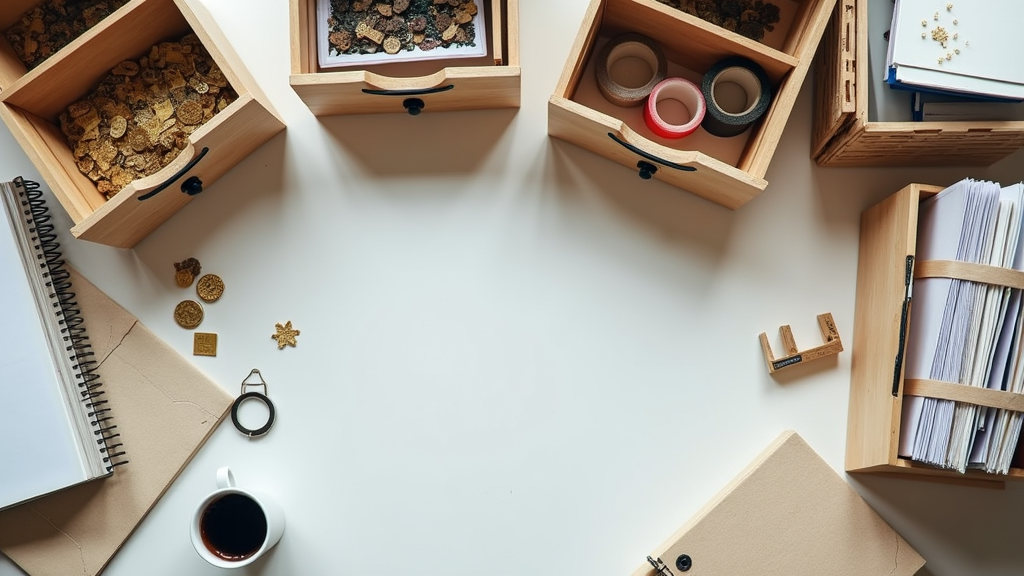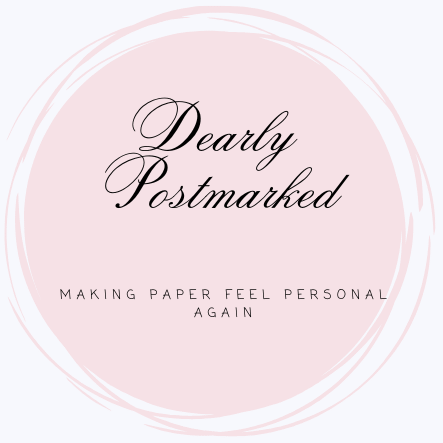Desk accessories can affect the flow of your workday a lot more than most people think. For anyone looking to build a workspace that’s practical, comfortable, and a little bit inspiring, choosing the right accessories can really make things easier. With so many gadgets, organizers, and creative touches out there, sorting through your options can feel like a tall order. I’m breaking things down so you can pick desk accessories that fit your daily needs and spark a bit of joy while you’re at it.

What Actually Counts as a Desk Accessory?
Desk accessories go far beyond just a pen holder or a cup for your paperclips. This category covers everything you use or see at your workspace; anything that helps you do your job better or keeps you organized. Think about items like document trays, special drawers with sections for postage stamps sorted by denomination, washi tape holders, planners or log books, cord organizers, trays for incoming and outgoing mail, and plenty more. Even the smallest desk accessory can sometimes save you time, frustration, or just add a fun detail to your daily routine. From phone stands to mini whiteboards, if it helps you stay organized or step up your workspace, it counts.
The Core Functions of Desk Accessories
I like to think of desk accessories in a few broad categories, each serving a key purpose.
- Organization: This helps keep your supplies easy to find and your surface clean. Divided drawers, desk trays, and modular organizers all fit here.
- Productivity: Timers, phone stands, charging stations, and log books can help keep you focused and on task.
- Creativity and Mood: Desk plants, framed quotes, or colorful washi tape storage add personality and maybe a spark of motivation when you need it most.
- Communication and Workflow: Systems for your mail, letter sorting, and note-taking help you keep information flowing correctly. This is super useful if you juggle lots of paperwork or need to remember what needs your attention.
Each of these categories lets you target a specific frustration or need you face at your desk. Whether it’s handling physical mail or keeping digital accessories tangle-free, the right tools help your workspace work smarter for you.
Choosing Accessories for Your Space
Figuring out which accessories you actually need depends on how you use your desk. Are you someone who loves writing notes by hand? Do you handle lots of physical mail? Or maybe you manage projects digitally but like some things in print next to you. I always recommend starting by thinking about what slows you down or creates little annoyances throughout your day.
Special Drawers for Stamps, Divided by Denomination
If you use postage stamps regularly, a special drawer divided by denomination is a total game changer. Small organizers with labeled sections for each stamp value keep you from hunting through tangled sheets or half-torn envelopes. These drawers make it quick to grab what you need and avoid mistakes on outgoing mail. I’ve found that clear acrylic trays, wooden segmented drawers, or even repurposed coin holders can all work well for this purpose. Consider customizing your drawer with colorful labels to make spotting the right stamp even faster.
Washi Tape Organization
Washi tape isn’t just for hobbyists; lots of people use it for labeling, color coding, or just adding some color to notes. A rod style washi tape holder lets you see all your rolls at a glance, and trays or divided boxes keep everything neat if you have a big collection. I keep my most used colors close at hand and store backup rolls in a shallow drawer with individual sections so nothing unravels. For larger collections, rotating carousels also give you quick access and keep everything visible at a glance.
Incoming and Outgoing Mail & Letters System
Even in the digital age, paper mail piles up on my desk unless I have a good system. Two trays marked “Incoming” and “Outgoing” keep things super clear. For shared workspaces, color coding can help; one color for items needing attention, another for stuff headed out. If you want something fancier, desktop mail sorters with adjustable slots give an easy way to separate letters by type, date, or urgency. It’s surprising how much this cuts back on lost or overlooked papers, especially if you share your office with others or manage several projects at once.
Log Books
A physical log book comes in handy for more people than you’d expect. If you track calls, mileage, packages sent out, or just like jotting down what you accomplished in a day, a dedicated log book keeps all that info in one tidy place. There are plenty of options, from simple lined journals to books with custom layouts for logging specific tasks. I like to keep mine within arm’s reach in a stand up file so it doesn’t get buried under paperwork. Log books are also great for keeping daily gratitude lists or habit trackers visible so you stay motivated.
Common Desk Accessory Options (and What to Watch Out For)
Some types of accessories show up on almost every desk, but the little details really matter:
- Desk Trays & Organizers: Look for sturdy materials and adjustable compartments so you can fit both big and small items. These range from sticky notes to desk scissors, even those tiny USB drives.
- Pen Holders and Caddies: Tall narrow holders save space, but wide caddies with divided sections keep things from becoming a jumbled mess. Try to get ones that won’t tip over easily, especially if you keep heavier markers or scissors in them.
- Tech Accessories: Charging docks, cable organizers, and wireless charging pads cut down on visible wires. Make sure your charging station actually fits your devices; I’ve tried a few that were just a little too cramped for comfort.
- Desktop Drawers: Stackable drawers, especially clear acrylic ones, make it easy to store small items like stamps, paperclips, and business cards. If you need a drawer dedicated to postage, make sure it comes with removable dividers. You can even customize the dividers to fit other supplies as your needs change.
Troubleshooting Common Desk Clutter Problems
- Too many loose papers? Try vertical desktop files to keep active projects visible, or install a wall mounted organizer if you’re tight on desk space. Rolling carts with small shelves also help keep paper sorted and within reach.
- Lost stamps and tiny supplies? A drawer with labeled sections (by stamp value or supply type) prevents things from disappearing or getting mixed up. Little containers inside the drawer help keep things categorized.
- Cord chaos? Magnetic cable clips or channels attached to the side of your desk keep charging cords easy to grab but off your main work surface. Color coded ties for each cable type can also fast track your morning setup.
- Stray washi tape rolls? Trays with shallow compartments or a dedicated rod rack display these while keeping them from rolling away. If you like to take your tape on the go, there are portable boxes with clear lids for quick packing.
Making Your Desk Both Functional and Inspiring
For a desk to do its job well, it needs to feel comfortable for you, day after day. Some people work best with totally minimal setups, while others prefer a curated collection of supplies and decorations. Mixing functional accessories, like that special divided stamp drawer or letter tray, with a few items that just make you happy (a plant, a favorite mug, or a neat log book you enjoy writing in) gives your space some personality. Feel free to swap things out based on the season or your current projects to keep the space feeling fresh.
Personalize Your Organization System
One thing I’ve learned: What works for someone else might not work for me. If you try out an organizing tool and find it doesn’t fit how you work, switch things up until you find something better. Desk organization is a process. Labels can move, trays get repurposed, and new accessories come and go as your needs and work change. Look for adaptable systems that let you mix in some variety as you go. Don’t be afraid to experiment with unlikely solutions—a kitchen drawer divider might work perfectly for office supplies, or a spice rack for washi tape organization.
Tips for Buying Desk Accessories Online
Online shopping makes it easy to browse a wide variety of desk accessories, but it’s smart to be cautious. Look for detailed photos, close ups of drawers or divided trays, and check product measurements so nothing arrives and ends up being too big or too small. Reading user reviews can tip you off to issues like sticky drawers or poorly fitting parts. If you’re eyeing something like a stamp dividing drawer or custom mail sorter, double check how the dividers work and whether they’re adjustable or removable. Contact the seller with questions before committing—it’s much easier than dealing with returns.
Frequently Asked Questions
Question: What’s the point of having a special drawer just for postage stamps?
Answer: It speeds up mailing tasks and helps keep your stamps sorted, especially if you use different denominations for various letters or packages. Plus, it stops stamps from getting lost or accidentally folded. Organized stamp storage cuts down on mistakes and saves money by avoiding wasted postage. I use a plastic storage unit that I bought at Hobby Lobby that has sixty little drawers with a divider in each drawer. I numbered each drawer 1/2, 3/4, 5/6 and so on to represent the denomination of my vintage stamps. It’s very handy.
Question: I love washi tape but always lose my favorite rolls. Any tips?
Answer: A rod style holder puts all the rolls on display, or you can store them in a shallow, divided drawer. Choose a spot that’s easy to reach but not in the way of your main workspace. If you bring tape to meetings, portable containers with snap shut lids work well too.
Question: How can I keep outgoing and incoming mail organized until it’s dealt with?
Answer: Simple labeled trays or vertical sorters do the trick. Assign a spot for incoming items and a separate spot for mail that’s ready to leave and make it a habit to clear them regularly. For busy homes or offices, color coding trays can help everyone know what’s what at a glance. Routine clearing helps keep the process working smoothly.
Question: What’s a log book good for on a desk?
Answer: Log books are handy for tracking calls, tasks, notes, or whatever else pops up during your day. I use them to keep track of letters that I send and receive. Log books give you a running record you can look back on, which is great for work accountability or keeping personal projects on track. Plus, they can serve as a record of your progress week by week.
Setting Up Your Space for Success
Organizing your workspace with the right desk accessories can make work days smoother and help you feel more on top of things. From divided drawers for postage stamps to systems for sorting mail and washi tape, practical accessories have a way of paying off day after day. Whether you’re decluttering or upgrading an already neat desk, keeping things tailored to your own work habits makes all the difference. Try out different solutions, refine what isn’t working, and your desk setup will keep getting better. With a little effort, you’ll transform your desk into a space that’s both efficient and enjoyable to use day after day.
